Switching SEO plugins can feel risky, especially after using any one of these SEO plugins for years. I recently migrated from Yoast SEO to Rank Math, and I want to share my honest experience.
I had used Yoast SEO for a long time and felt comfortable with its interface. Still, some limitations made me curious about alternatives that could improve my workflow.
Rank Math promised more features while keeping things beginner-friendly. I decided to test it on my website to see real differences.
In this article, I will explain why I switched, what challenges I faced, and my results. These points come from my own hands-on experience.
Quick Access
ToggleThe Challenges I Faced Using Yoast SEO

Yoast SEO’s interface felt overly technical and confusing, making it hard to complete basic SEO tasks efficiently. I often wasted time searching menus just to find simple options for optimisation my website.
At times, my SEO score would not display at all, leaving me unsure about necessary improvements. This problem made it frustrating to track progress or measure content performance properly.
I struggled to find a way to fix broken links because the plugin offered no beginner-friendly guidance. Even with tutorials, it took too long to identify and correct issues manually.
Managing internal links was very time-consuming, requiring me to manually check each post to ensure proper connections. This slowed down my workflow significantly and reduced overall website efficiency.
What Made Me Curious About Rank Math SEO Plugin
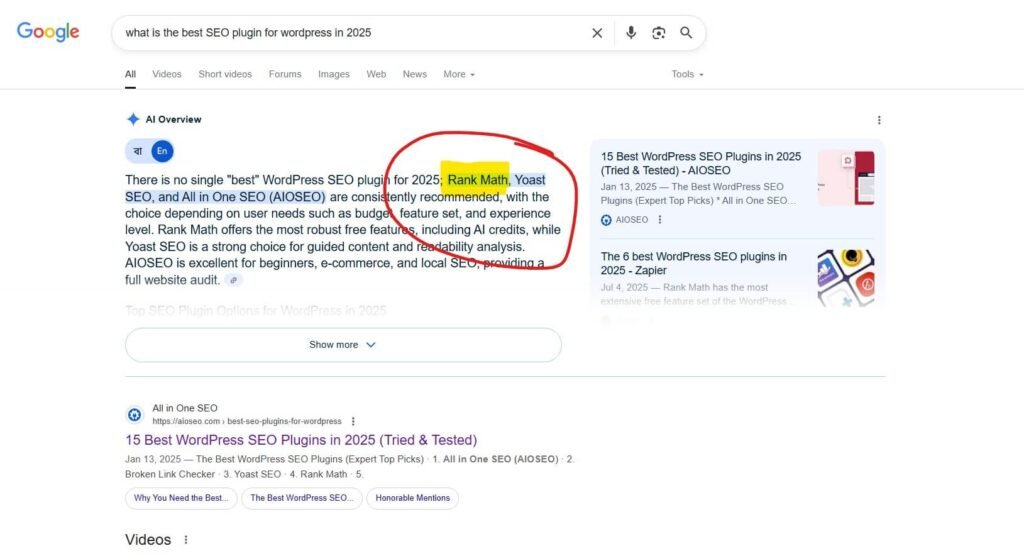
I started searching on Google for “what is the best SEO plugin for WordPress in 2025?” Rank Math appeared at the top of most results, which immediately caught my attention.
Curious, I watched a lot of YouTube videos to see real experiences and tutorials. Many creators praised Rank Math for being beginner-friendly and feature-rich.
I realised Rank Math could suit my needs better than Yoast SEO. Its setup seemed simpler, yet it offered powerful SEO features for my websites.
After comparing features and watching reviews, I felt confident that Rank Math was worth trying. It seemed like the perfect balance between guidance and flexibility.
My First Impression After Installing Rank Math
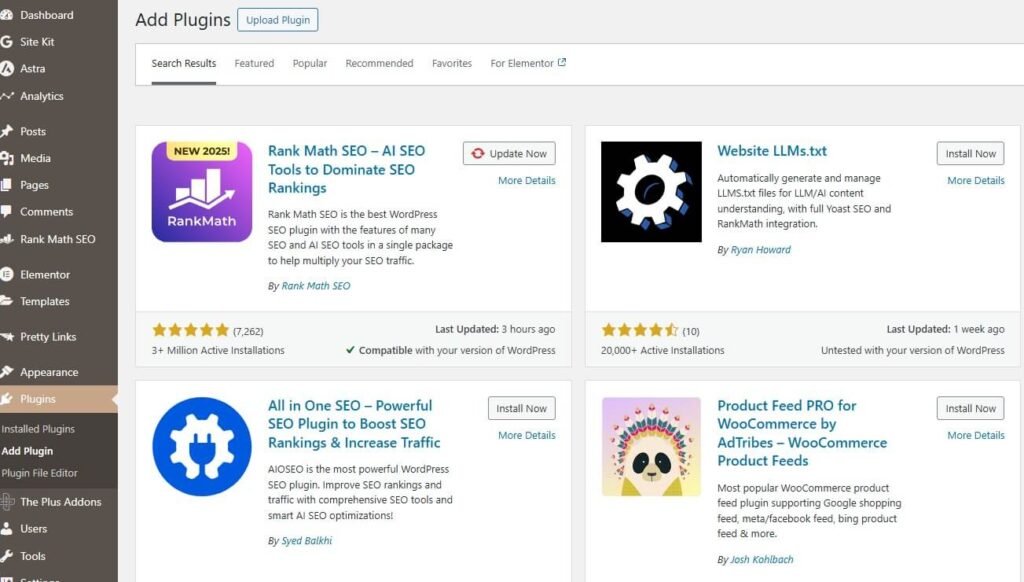
The installation process for Rank Math was simpler than I expected, which immediately impressed me as a beginner. I discovered two ways to install it: either through the WordPress plugin directory or manually.
I first tried installing it directly from the WordPress plugin directory, and the process was smooth and fast. Within minutes, the plugin was ready, and I could start the setup without confusion.
The manual method was also straightforward, giving me more control over installation settings if needed. It felt reassuring to know I had multiple options depending on my preferences.
After installing, the setup wizard guided me step by step through configuration, making everything clear. My first impression was that Rank Math truly cares about user-friendliness and simplicity.
The Setup Process Was Easier Than I Expected
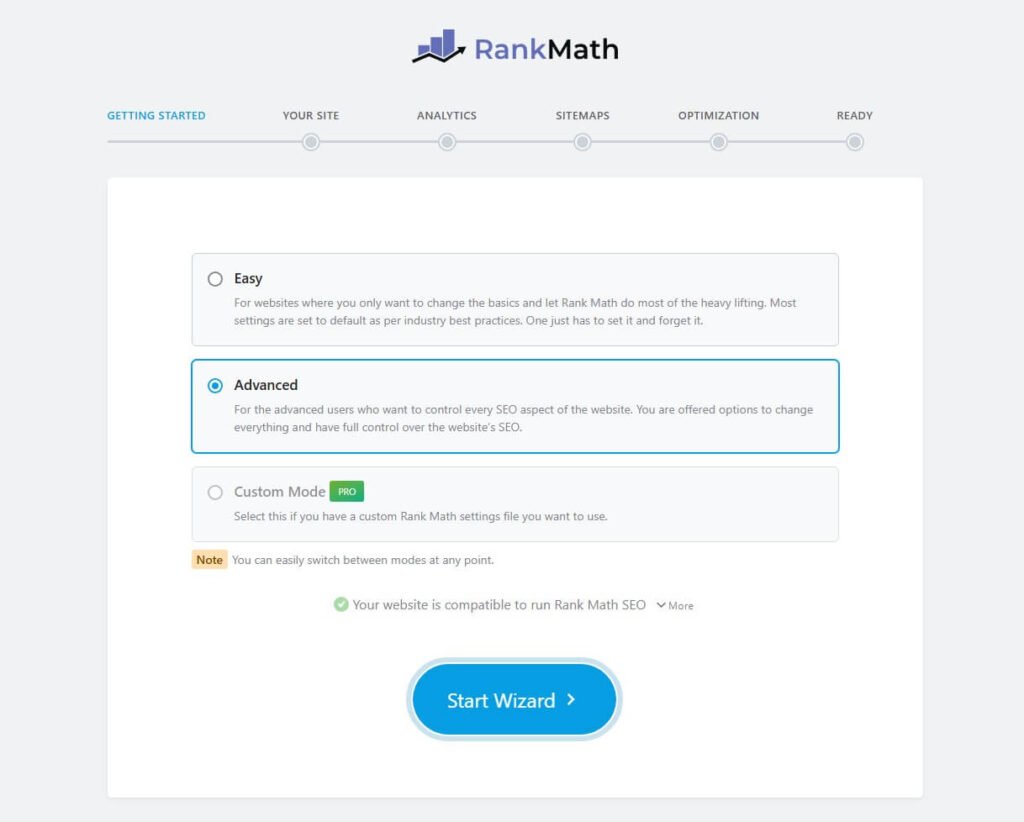
When I activated the Rank Math SEO plugin on my website, the setup page opened automatically. It immediately gave me three options: Easy, Advanced, and Custom mode, which was very clear.
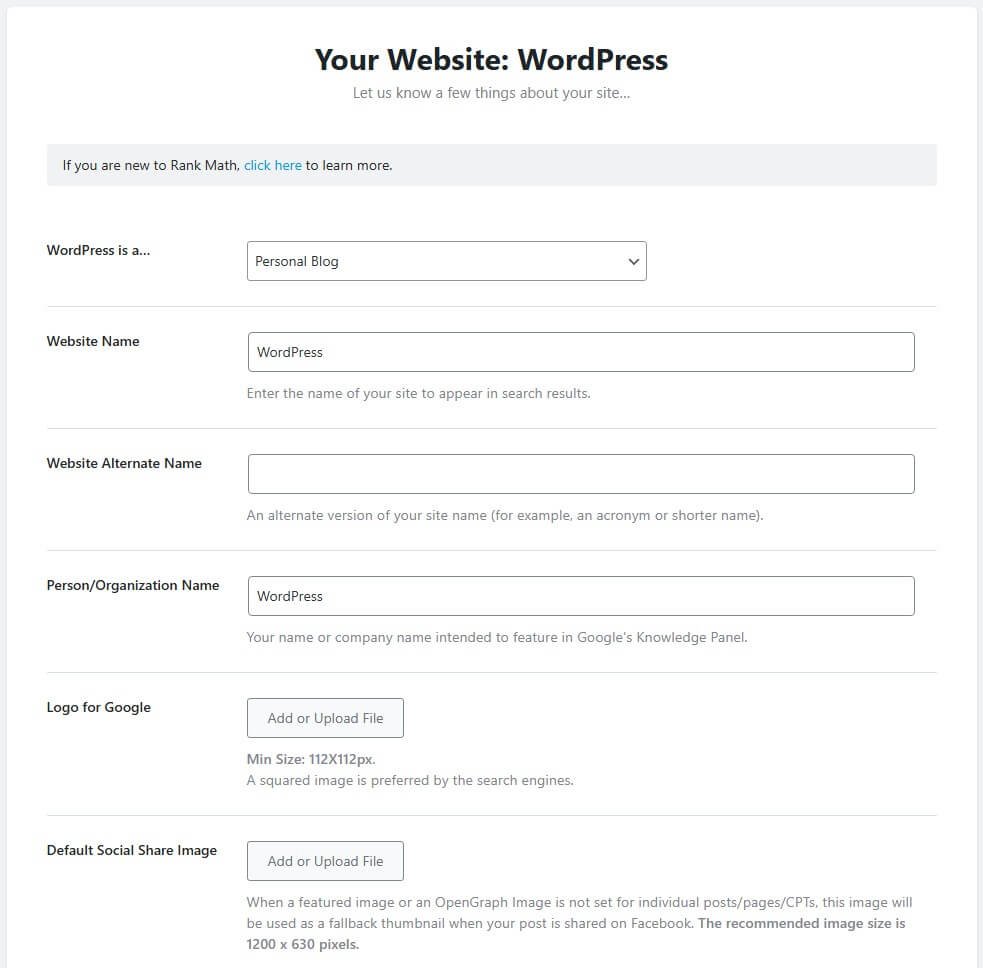
I chose the Easy mode first, which guided me to enter basic website details. I added my website niche, name, logo for Google, and an image for social sharing.
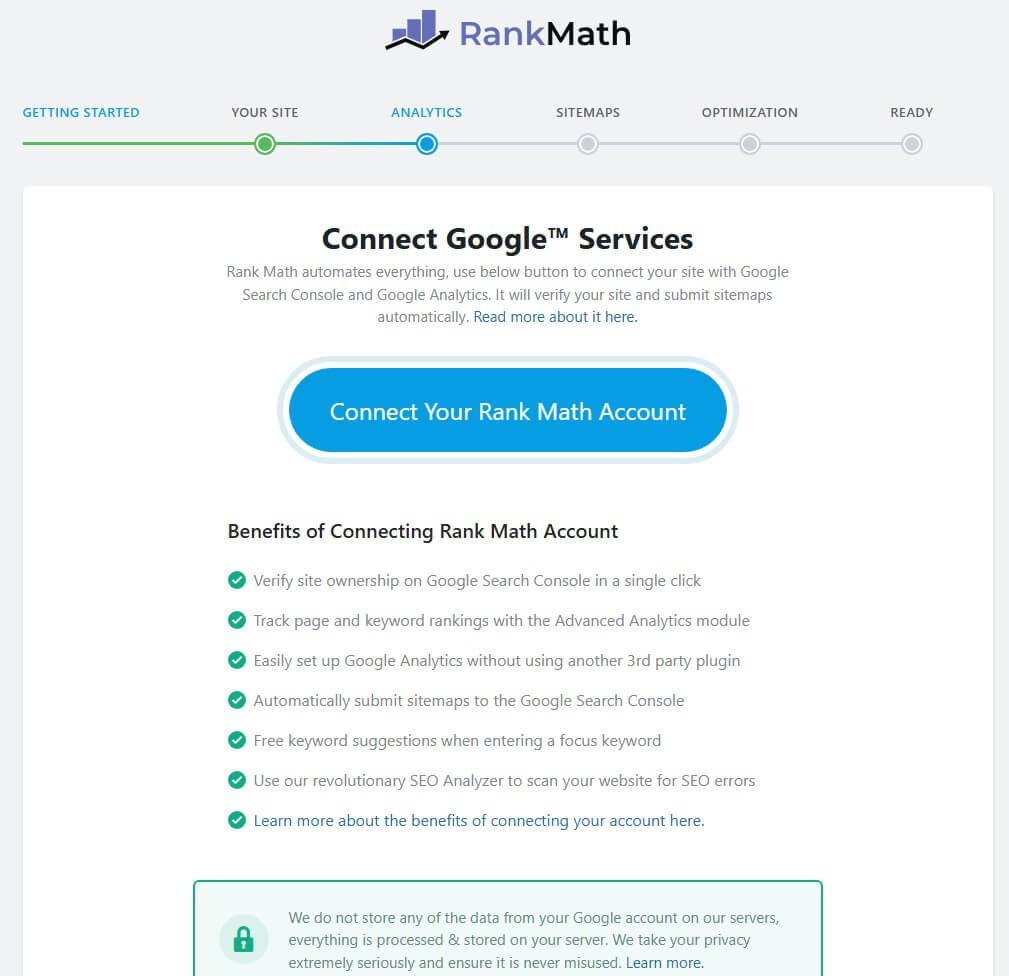
Next, Rank Math asked to connect with Google Analytics, set up sitemaps, and apply optimisation settings. I realised I could skip these steps if needed, which felt convenient.
The best part was that their default options were already well-configured for most websites like mine. I didn’t need to spend much time adjusting anything manually.
By the end of the setup, my site was ready for SEO improvements. The process felt smooth, beginner-friendly, and far less complicated than I expected.
Clean Interface That Didn’t Feel Overwhelming
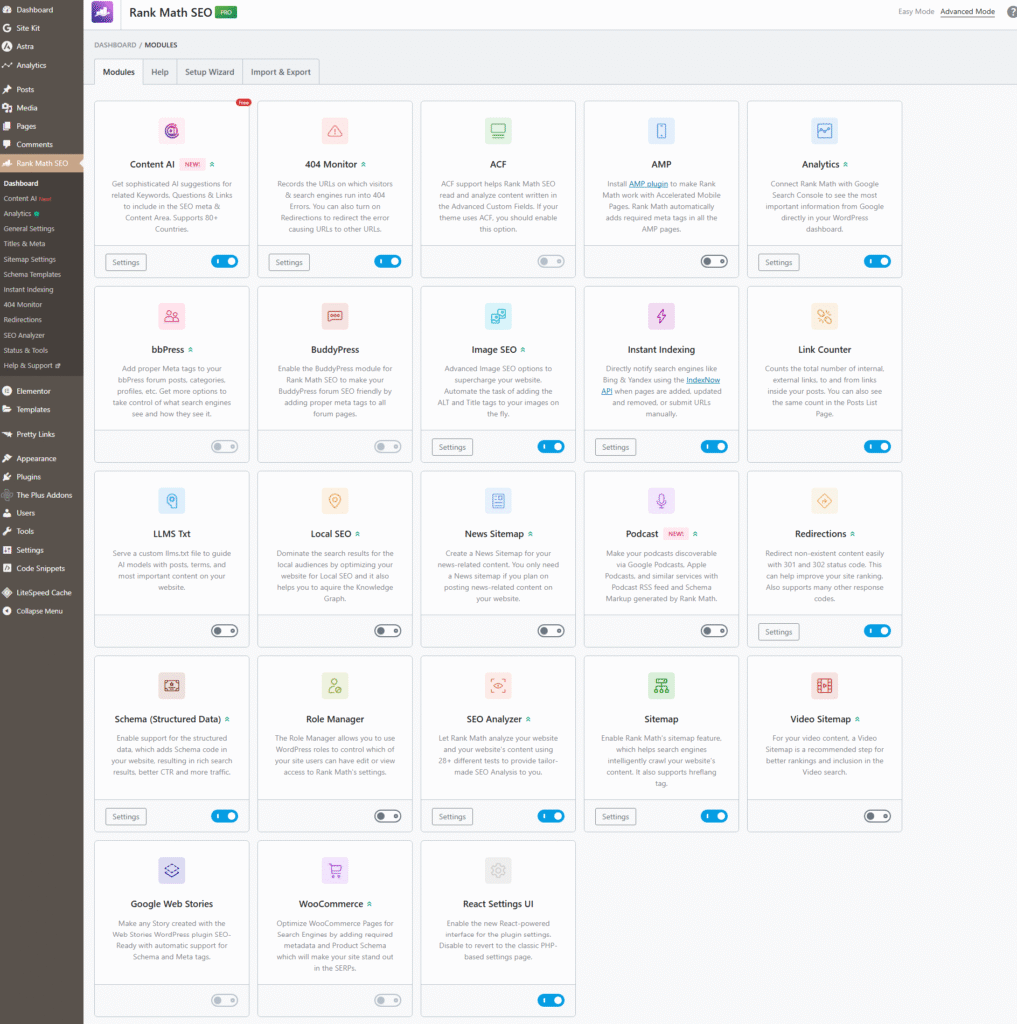
When I first opened Rank Math’s dashboard, the interface felt clean and very organised. I could easily find important settings without confusion.
Unlike Yoast SEO, nothing felt cluttered or overwhelming, even with all the available features and options. I immediately felt comfortable navigating it daily.
Every tool and section had clear labels, making it easy to understand their functions. I didn’t need tutorials to figure out basic tasks.
The simplicity didn’t mean it lacked power; I could still access advanced SEO settings whenever I needed. It perfectly balanced usability with functionality.
Real-Time SEO Suggestions Changed the Way I Write
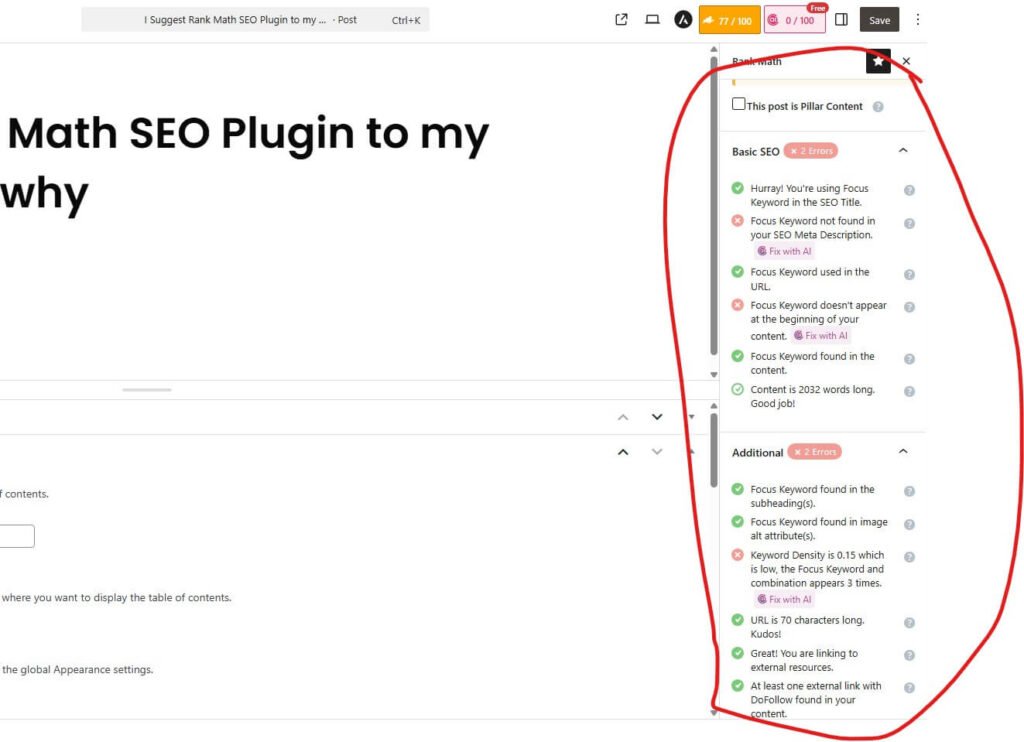
Rank Math’s real-time SEO suggestions completely changed how I approached writing content for my website. I could see the SEO score instantly.
It helped me optimise every page effectively, including:
- Fixing URLs for better readability and SEO.
- Adjusting content length to meet SEO recommendations.
- Use focus keywords in headings, titles, and meta descriptions.
- Optimising SEO title and meta description for higher click-through rates.
- Managing URL length for better search engine visibility.
- Adding internal and external links to strengthen content relevance.
These suggestions made writing faster and more structured. I no longer worry about missing important SEO elements while creating content.
Rank Math Analytics Gave Me Data, Yoast Never Showed
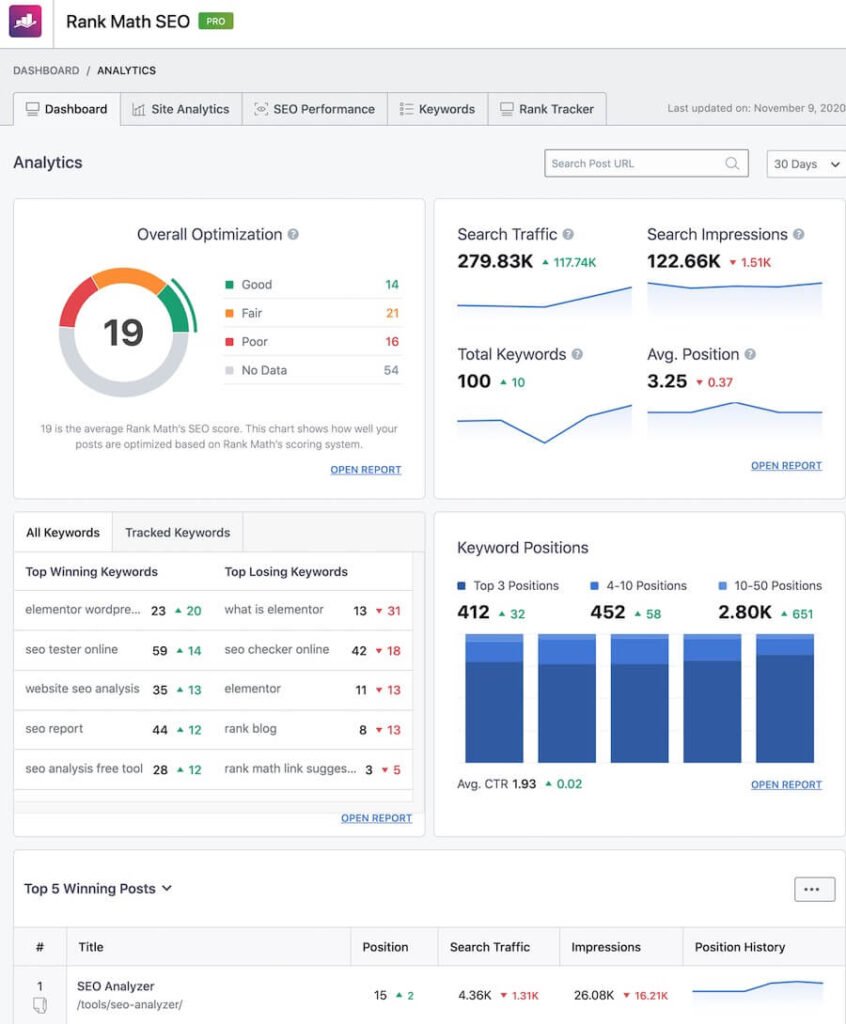
Rank Math Analytics completely changed how I monitored my website’s SEO performance. Yoast SEO never provided this much detailed data.
It gave me full reports for every post and page, helping me understand what worked and what didn’t. The data included:
- Search traffic and impressions for all posts.
- Total keywords and their average positions in search results.
- Top winning and top losing keywords.
- Top performing posts driving the most traffic.
- Keyword positions categorized as Top 3, Top 4–10, and Top 10–50.
- Overall SEO performance and rank tracker for all tracked keywords.
- Index status and site analytics for complete visibility.
Having this data allowed me to make informed SEO decisions. I could quickly adjust strategies to improve rankings and traffic.
Rank Math’s analytics dashboard felt like having a full SEO team in my hands. It truly showed me insights I never got from Yoast.
Fixing 404 Errors and Redirects Was Super Simple
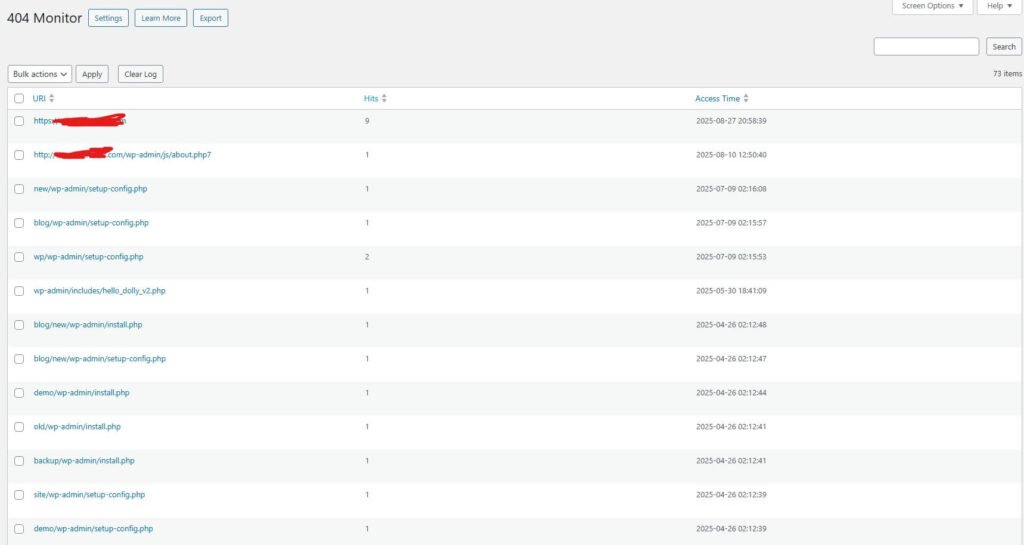
One of the biggest surprises for me was how easy Rank Math made fixing 404 errors. With Yoast, I struggled to even locate broken links properly.
Rank Math automatically showed me a log of 404 errors, so I didn’t need external tools. From there, I could quickly redirect broken URLs without confusion.
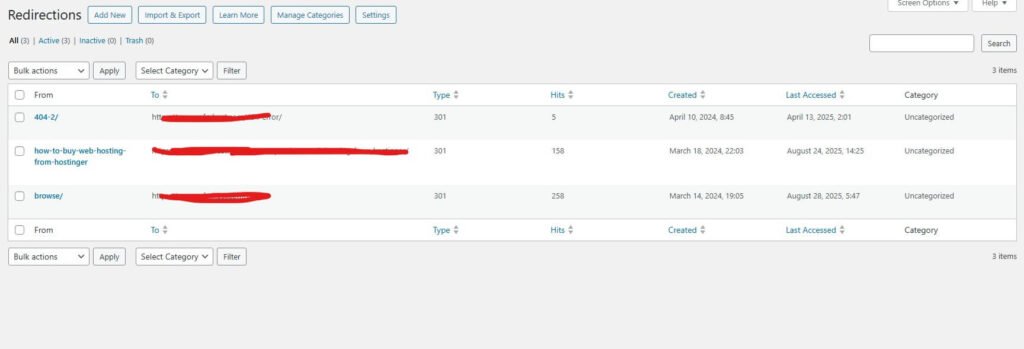
The plugin offered different redirect types, which made it flexible for various needs. For example:
- 301 permanent redirects.
- 302 temporary redirects.
- 307 redirects for testing.
- Custom redirects for special cases.
This feature saved me time and improved my user experience immediately. Visitors no longer landed on error pages, and my site stayed clean.
Content AI Became My Secret Writing Assistant
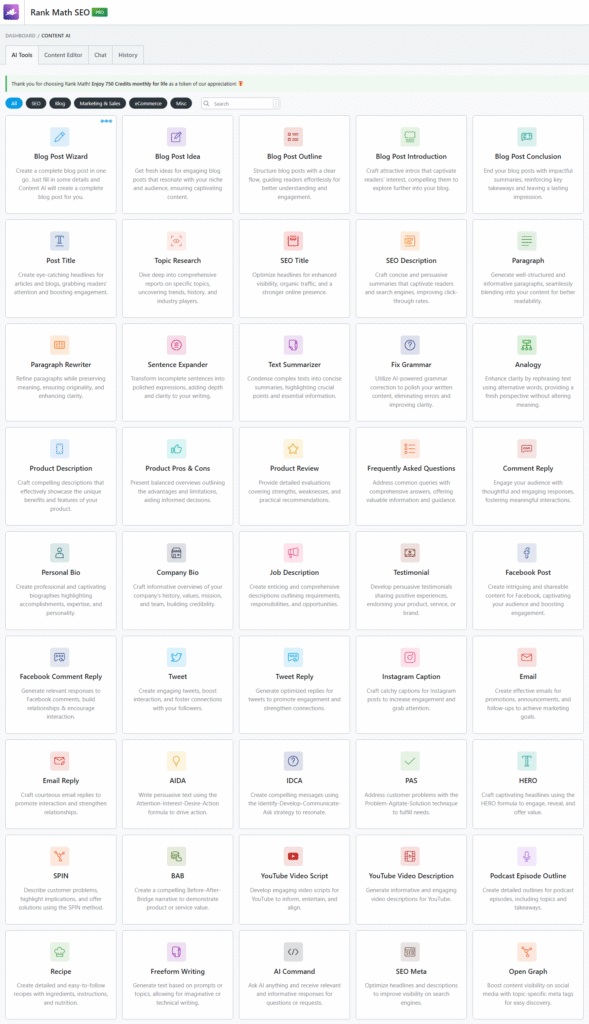
When I first tried Rank Math’s Content AI, it felt like having a personal writing assistant. It offered powerful tools that made creating SEO-friendly content much easier.
The features inside Content AI were surprisingly versatile and covered almost everything I needed. Some of the most useful tools included:
- Blog Post Wizard for creating full-length posts step by step.
- Blog Post Ideas to spark creativity when I had writer’s block.
- Blog Post Outline to structure articles properly before writing.
- Blog Post Introduction and Conclusion suggestions to save time.
- Post Title Generator for eye-catching, SEO-optimized titles.
- Topic Research to understand search demand and trending content.
- SEO Title and SEO Description generators for higher CTR.
- Paragraph Writer, Rewriter, and Sentence Expander for improving readability.
- Text Summarizer to shorten long passages into digestible pieces.
- Grammar Fixer to polish my writing quickly.
- Analogy Generator to make content more engaging and relatable.
- Product Description, Pros and Cons, and Reviews for eCommerce and affiliate content.
- FAQ Generator for boosting rich snippets and SEO visibility.
- Personal Bio and Job Description writers to optimize professional content.
- Facebook Post and Twitter Post generators for quick social media updates.
With so many features in one place, Content AI saved me hours of effort every week. It became a tool I relied on daily for writing and optimization.
Did Rank Math Actually Improve My Rankings? (The Results)

After switching from Yoast to Rank Math, I tracked my SEO results carefully to measure the real impact. The difference was clear and impressive compared to what I experienced before.
My search traffic increased up to 279.83K, while my search impressions reached an impressive 122.66K within months. Rank Math’s optimization tools definitely contributed to this massive growth.
The keyword performance also improved dramatically, with stronger rankings across multiple positions. Here’s what my data showed after migration:
- Total keywords tracked: 100.
- Average keyword position: 3.25.
- Keywords in Top 3 positions: 412.
- Keywords ranking in positions 4–10: 452.
- Keywords ranking in positions 10–50: 2.80K.
These results proved that Rank Math wasn’t just easier to use, but it actually delivered ranking improvements. My content visibility and keyword positions became stronger than ever before.
Overall, Rank Math helped me achieve results that I never experienced with Yoast SEO. It turned my SEO strategy into a data-driven success story.
Why I’m Sticking With Rank Math for the Long Run
After using Rank Math for months, I realized it was more than just another SEO plugin. It became an essential part of my workflow.
The combination of analytics, content AI, real-time suggestions, and simple setup saved me time and effort daily. No other plugin provided this level of convenience.
Rank Math consistently delivered results by improving rankings, traffic, and keyword positions. These improvements gave me confidence to trust it long term.
Most importantly, it balanced beginner-friendliness with advanced features, which means it will continue supporting me as my website grows.







